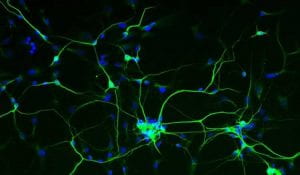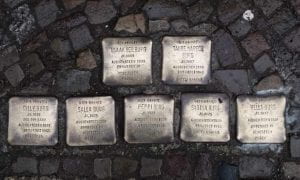Before describing the outline of the course, I want to highlight a few things:
- All of these lesson plans are designed to be easily copied and changed so that you can transform them into your own lessons. While the resources are embedded on the following pages, in order to copy them and create your own versions, you need to navigate to the “Materials” link in the menu or click here.
- Please leave comments under the lesson guides with your own suggestions so that when people visit this site in the future, they can continue to create better and better lessons for their students. I hope this can be a kind of community where we can help each other.
With that said, let’s talk about the course…

Source: GeneticLiteracyProject.org
The first few days of the course are dedicated to building community and exploring how memory works. Lesson 1 gauges what students know, Lesson 2 offers a crash course on cells and neurons, and Lesson 3 puts it altogether to explain one current theory on the biology of memory.
Note: The content of Week 1 is totally modular. It can be taught on a spectrum between scientifically rigorous and more narrative. You may choose to shorten or lengthen it. Alternatively, you may remove it completely and focus solely on the other lessons about personal + collective memory. I hope that you will feel empowered to make the decision that is best for you and your students!

Source: iStockPhoto.com
The second week of lessons aims to get students to look at the process of remembering in a new way. Lesson 4 focuses on inhabiting memories, Lesson 5 analyzes memories as sensorial experiences, Lesson 6 pushes students to look at forgetting in a new way, and Lesson 7 tries to get students to relive memories from the perspectives of other people.

Source: TheNewEconomy.com
Collective memory describes the phenomenon when groups of people come together to remember moments from the past. In the process, a group consciousness emerges and individual memories are changed. Lesson 8 introduces those themes and Lesson 9 explores the importance of collective remembrance in processing painful and traumatic memories. Lessons 10 and 11 shift towards understanding how collective memory shapes our understandings of history in important ways.

Source: Washington.org
The final two weeks of the course explore where collective memory operates in our world. Week 4 specifically focuses on the various media of memory. Lesson 12 focuses on the relationship, similarities, and differences, between photography and memory. Lessons 13 and 14 focuses on the objects and places that memory crystallizes, such as memorials. Lesson 15 introduces the course’s final project.

Source: TheGuardian.com
In the last few classes, your students will complete their final projects. Lesson 18 focuses on expanding students’ understandings of memory landscapes to cemeteries and the practice of burying the dead. During Lesson 19, students share their final projects and the class concludes on a reflective note.

Inspiration for the final project.
Over the course of a little over a week, each of your students will design a memorial from scratch. These memorials will commemorate specific events or movements from history that are personal to each student. This project will help your students develop research skills, critical thinking, a broader understanding of memory landscapes, and a thoughtful awareness of design aesthetics.
If you are unable to create an entire 19-lesson unit around memory, many of these lessons are easily adaptable to one-off elective classes. Linked here is one particularly successful 60-minute lesson. Feel free to work it into one of your existing classes if you think it would be beneficial to your students’ learning!






